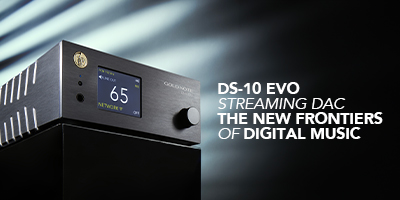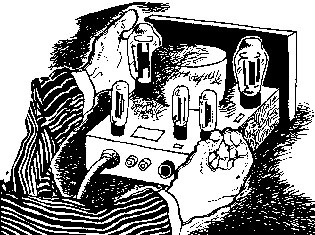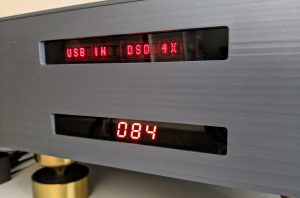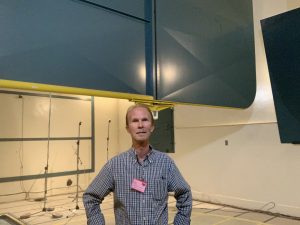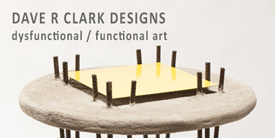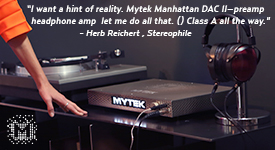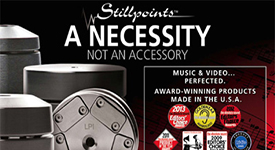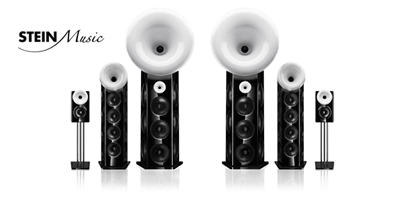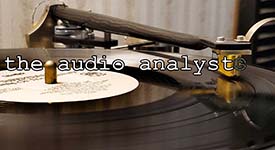Roger Skoff says yes, but not as much as you think...
Back in the old days of HiFi, if you were to ask audiophiles to name the single greatest requirement for perfect sound reproduction, my guess is that at least 9 out of 10 would have said "flat frequency response."
That was in the mid-1950s, when stereophonic sound was still something you heard, not at home, but mostly at specially-equipped movie theaters. And even then it was, like the 3D movies of the day (where, if you were wearing the special glasses, things would move around or pop out at you) more of a "special effect" than a genuine attempt at greater realism.
What early home stereo mostly was (even after stereo LPs came out to replace specialty prerecorded tapes in 1957) was marching bands, railroad trains passing through your listening room, or jet planes zooming overhead—simple stuff that relied mostly on gross amplitude or timing differences between the two stereo channels to create its effect.
Besides the fact that novelty sells, though, and people would eagerly buy whatever was offered (even I had my share of railroad train, ping pong game, and jet plane recordings—including one of an atomic bomb blast recorded from just 20 miles away) the truth was that the majority of the speakers of that time weren't sophisticated enough to do much better than the kinds of tricks that stereo first offered... .
Most of them had been designed for monophonic (single channel non-stereo) use (the only thing there was before stereo), and—never before needing to be able to reproduce spatial or anything other than the most obvious ambient information—they had their drivers placed just for looks or convenience on their front baffles, with no attention paid at all to time alignment or diffraction effects. They also often had complex crossovers (or purposely wired-out-of-phase mid-range drivers) that—while they might have flattened the frequency response—made phase coherence, and thus proper transient attack and decay and modern pinpoint imaging impossible.
The big thing that HiFi designers before the stereo age concerned themselves with was frequency response—how deep the bass was and how high the treble, and how little difference in output level was (how "flat" the "curve" was) between any two frequencies along the way. At first, the range of frequencies covered was the (1930s and 40s) "professional" (radio stations and recording studios) standard, which was 50 to 15,000 cycles per second. Now cycles are called "Hertz," and abbreviated to "Hz.", with no more than a total variance in output of plus or minus 3 decibels (dB) above or below a set "zero" level. Later, as our knowledge and our equipment got better, the standard was increased to 20 to 20,000 Hz per second, still plus or minus 3 dB.
That 3dB figure was chosen because it's generally accepted as being the smallest difference in audio volume level (SPL, or Sound Pressure Level) that most people can hear. Where it becomes misleading, though, is that when we talk about a speaker's frequency response being "flat within 3dB" across its frequency range, we're not just talking about 3 dB, but actually 6 dB, the total variance from 3dB above the zero line to 3 dB below it. or, in fact, a total of 6dB in output level—enough to make the different tones seem not just barely different, but actually to be perceived as either half or twice as loud. And, to carry it further, that's not even considering the possibility that there might be other high and low level frequency differences of the same or lesser magnitude—possibly many of them—across the frequency spectrum of the same speaker system, all of which could add their own sonic character.
The result is that any number of speakers can truthfully claim to have the same frequency response, across the same frequency range, with the same plus or minus 3dB of variation from flat, and still, because the peaks and valleys in their response curves are at different frequencies, no two of them will sound alike.
So, what if—by some modern magic or technological brilliance—some designer or group of designers were to come up with a speaker (or even an entire system) that measured absolutely flat (plus or minus zero dB), in an anechoic chamber across its entire range? Would It still be flat when you got it home.
No.
In-room frequency response can vary considerably from any speaker's tested response in an anechoic chamber. How or where the speakers are placed in a room can affect their perceived performance. So can how the room is decorated, furnished, or acoustically treated, and even how many people are sitting in it, enjoying the music. A too small room can even affect a speaker's low bass performance, limiting it to what the room will propagate, despite what's actually coming out of the speaker's bass driver(s).
In short, despite what some designers may say and for various other reasons, frequency response may not be the major determinant of system performance.
So what is?
Temporal response.
Natural sound—whether from a symphony, a rock concert, a door slamming or an explosion—always arrives at your ears intact from its source, all at once, and with no frequency-related or physical cancellations, sonic artifacts, or delays.
If our recorded sound could be the same, we could be much nearer sonic perfection. Almost everything, though, in the process from live performance through recording and playback, and ultimately to our ears, is working against that.
Just for example:
If, in the recording process, more than one microphone picks up the sound of the same performer, but from different positions, there can, just because of the different positioning, be phase differences, cancellations, or the creation of phase artifacts, and the sound will be changed.
Every gain stage in every electronic product reverses signal polarity and must be offset by another device to reverse it back. If that doesn't happen, the passed signal will be 180 degrees out of phase.
Speaker systems with crossovers regularly screw-up the phase relationships (timing) between their drivers, which detracts from the speaker's imaging ability.
Even single driver speaker systems with no crossover can still have phase problems: These are the result of natural mechanical roll-offs at frequency extremes or irregular frequency slopes within the driver's frequency range, all either caused by, or as the result of phase shift.
Older, non-time aligned speakers can also create timing (phase and physical delay) problems and make maximum performance impossible.
And, finally, even with perfect electronics and perfectly phase-correct speakers, there can still be time and phase related problems simply by virtue of less than perfect speaker placement in your listening room. Remember that sound is movement in air, and that differences in distance between your listening position and your speakers can, just in itself, affect the sound you hear—especially in terms of imaging and soundstaging.
Flatter frequency response is certainly good, but getting the timing right can make even more of a difference.
Drawings by Bruce Walker and Dan Zimmerman. Photograph and image processing by David W. Robinson.

